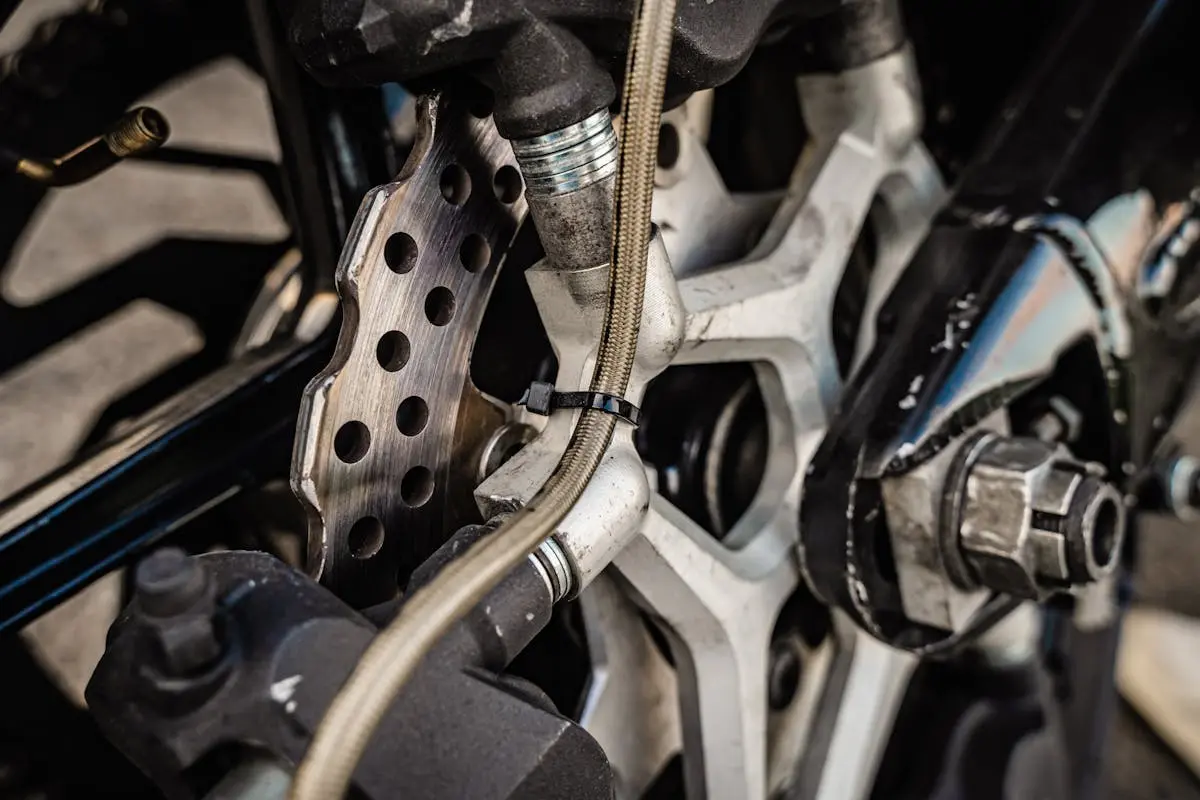A Friendly Guide to Knowing When to Change Your ATV Brake Pads
Posted by Race-Driven on Oct 7th 2024
Maintaining your ATV is crucial for ensuring a safe and enjoyable ride. Among the various components requiring regular attention, brake pads are one of the most critical. Knowing when to change your ATV brake pads can be the difference between a smooth stop and a sudden crash. Let's dive into how you can determine the perfect timing for a brake pad change.
Understanding ATV Brake Pads and Their Importance
Brake pads play a vital role in your ATV's braking system, providing the necessary friction to slow down or stop your vehicle. Understanding their function helps you appreciate the importance of keeping them in good condition. When you press the brake lever or pedal, the brake pads create friction against the rotor, slowing down your ATV. This friction isn't just a minor detail; it's the backbone of your safety as it allows you to control speed, especially on challenging terrains.
The materials from which brake pads are made vary considerably and can include organic, semi-metallic, and sintered metal options. Each type has its advantages, whether it be quieter performance, more substantial stopping power, or longevity in tough conditions. The differences in material can impact how the pads wear over time and their suitability for different riding conditions.
Regularly checking on the condition of your brake pads should become a part of your routine ATV maintenance. Over time, brake pads will naturally wear down due to continual friction. When the pads get too thin, they lose their friction ability, making your ATV prone to sliding rather than stopping instantly. Keeping them in check ensures that your ATV performs optimally and keeps you safe on every ride.
Signs That Your Brake Pads Need Replacing
Recognizing the signs that your brake pads are due for a change is critical for maintaining the safety of your ATV. One of the most obvious indicators of worn-out brake pads is a squeaking or squealing sound when you apply the brakes. Such sounds often result from metallic wear indicators embedded in the pads, designed to alert you when it's time for a replacement.
Another symptom to keep an eye out for is a longer stopping distance. If your ATV takes more space to halt than usual, the brake pads might not be providing the necessary friction, indicating they could be on their last legs. Also, visually inspect your pads; any thinning or wear patches could point to the need for a replacement.
Different types of wear patterns can give you further insights into the efficiency of your brake pads. Uneven wear might signify issues with other brake components, such as the rotor's surface being out of alignment. To avoid costly and complex repairs, it's essential to tackle these issues as soon as you spot the early signs.
How Often Should You Inspect Your Brake Pads?
Routine inspections are necessary to spot when your brake pads need attention. Typically, ATV enthusiasts should check their brake pads every 20 to 30 hours of use, depending on the riding conditions. Terrain plays a significant role; riding on more challenging terrain like mud or rocky surfaces generally requires more frequent checks.
The frequency of inspection might also depend on your riding style. Aggressive riders or those who frequently engage in downhill rides need to be particularly vigilant, as their brake pads experience more wear and tear. Regular inspections help catch issues early, preventing further damage to related brake components, like rotors and pistons, which could incur more costly repairs down the line.
Each ATV model might have slightly different recommendations when it comes to brake maintenance. Be sure to consult your owner's manual to tailor your checks to your specific ATV model's needs. Additionally, keeping track of any adjustments or replacements you've made to your brake system helps in maintaining an accurate maintenance schedule.
DIY vs. Professional Brake Pad Replacement
Deciding whether to replace your brake pads yourself or enlisting a professional's help can often come down to your experience level and the tools at your disposal.
Opting for a do-it-yourself method not only saves money but also grants you insight into your ATV’s mechanical workings. The satisfaction of a successful part replacement can also boost your confidence in handling further simple repairs. However, it's crucial to acknowledge your own skill level. If you're not confident, improper installation can lead to brake failure, which poses a serious risk.
Professional mechanics, on the other hand, offer experience and precision. Bringing your ATV to a trusted shop ensures that the pads are fitted correctly and tested for optimum performance. This route is advisable for those lacking the proper tools or time to devote to the task. Ultimately, balancing the cost, your personal comfort with mechanical tasks, and your need for speed (or lack thereof) will guide your decision in choosing what's best for you.
Stay Safe and Ride On
Keeping an eye on your ATV brake pads is a simple yet essential aspect of ATV maintenance. By regularly inspecting your brake pads and paying attention to the warning signs, you can ensure your rides remain safe and enjoyable. So, use this guide as a reference and keep your ATV in top shape, ready for any adventure.


